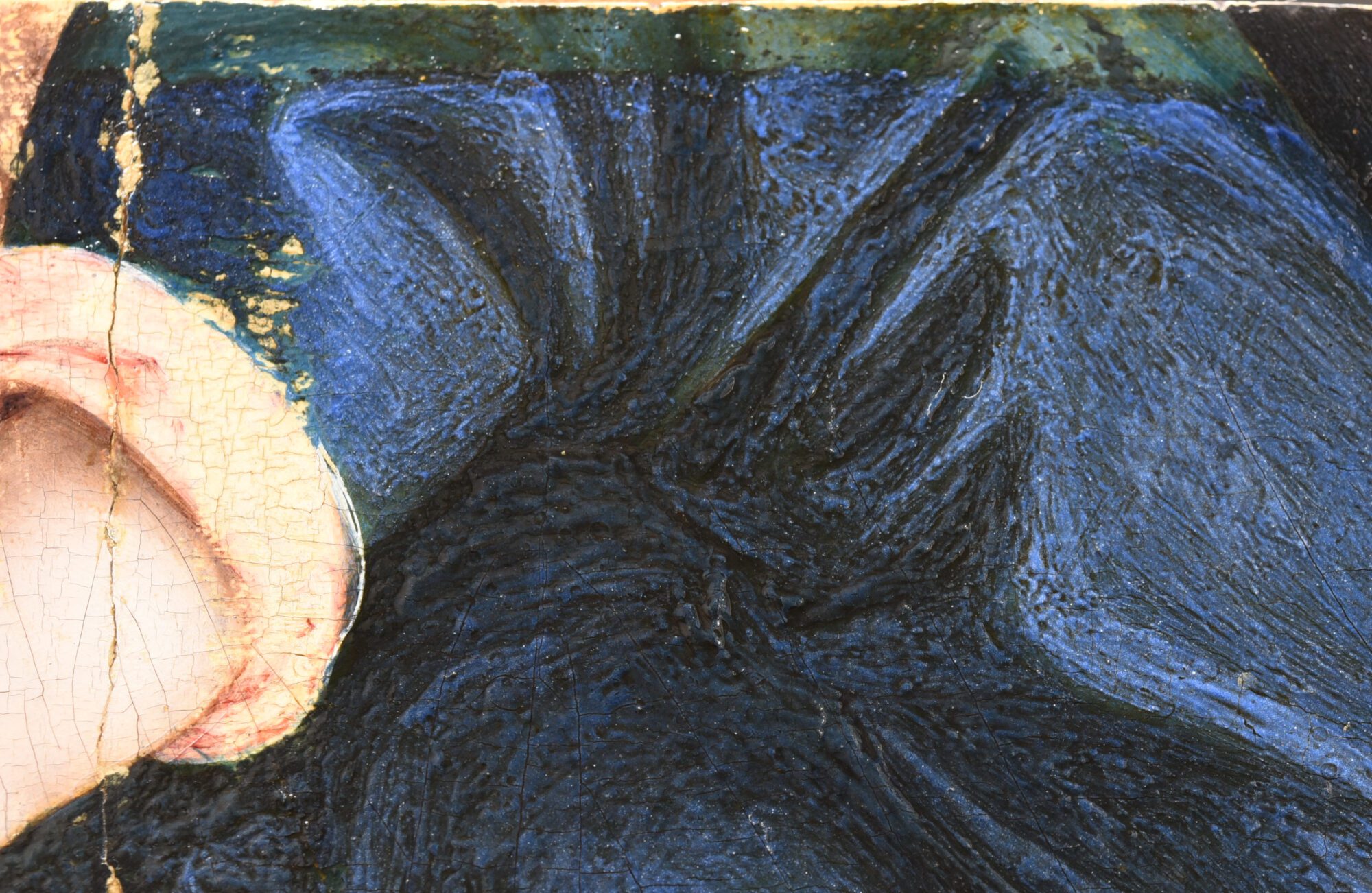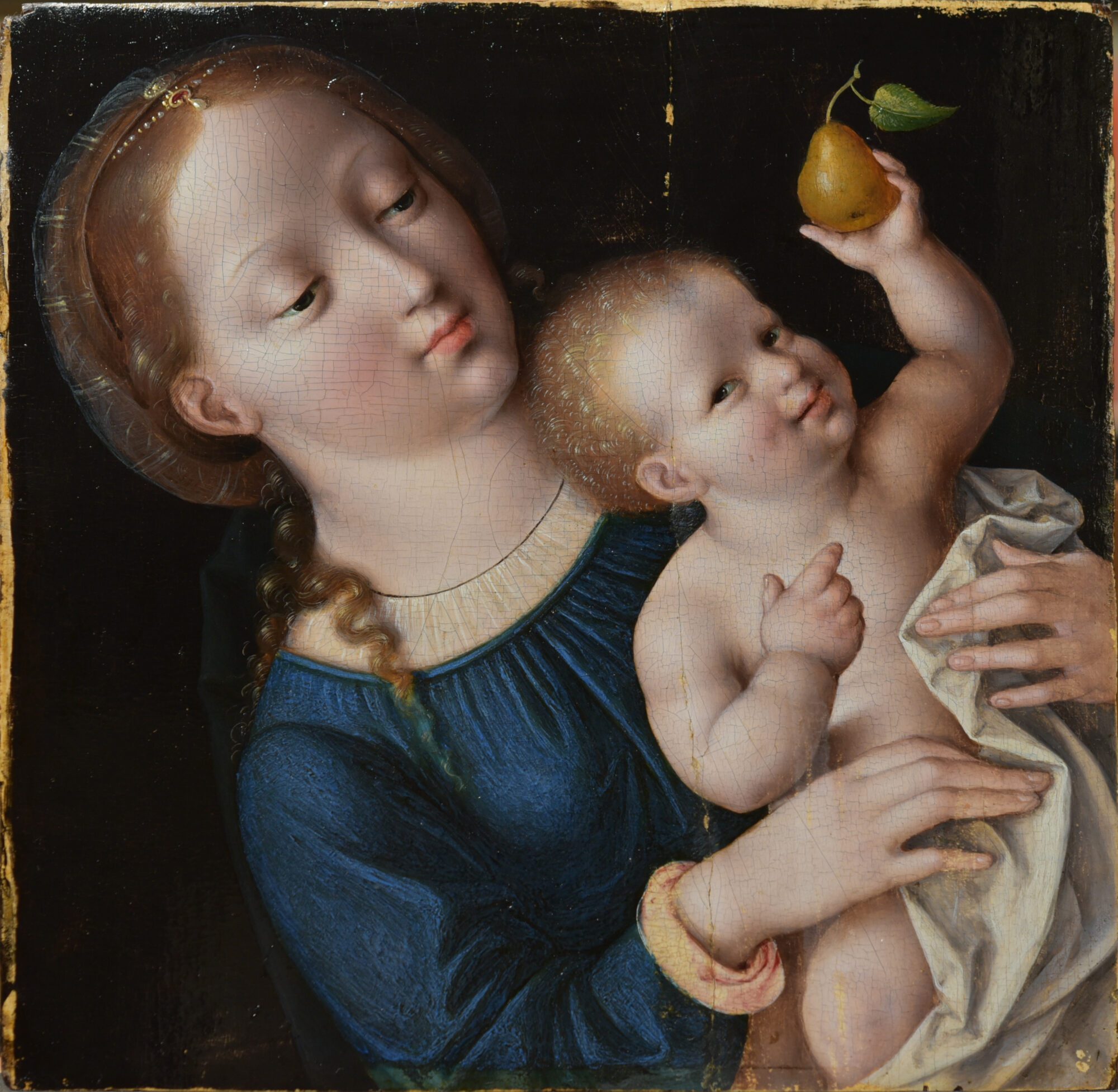Dive behind the paint layers of Joos Van Cleve
Phoebus Fellow Anna Rota (IT) is happy to offer you a glimpse behind the scenes of her conservation project at The Phoebus Foundation:
‘Despite its small size (25 x 25 cm), this painting by the studio of Joos Van Cleve (1485-1541), immediately attracts our attention. The unusual diamond-shaped support seems to be unique in the artist’s oeuvre and raises questions about the distribution of diamond-shaped paintings in Renaissance painting.’

‘The facial tones, with such a soft transition between light and shadow, can be compared to Leonardo Da Vinci’s “sfumato.” The artist was particularly attentive to detail and used various material tricks: just look at the thickness of the colour layer of the pearls in Mary’s hair or the folds of the white veil along her neckline. Mary’s hair and the faces and hands, on the other hand, are rendered with very thin brushstrokes.’

‘The removal of varnish and retouching has brought back the beautiful colors of the facial tones, as well as some details that were previously less visible. The conservation treatment has allowed us to discover more about the painting technique of Van Cleve and his studio.’
